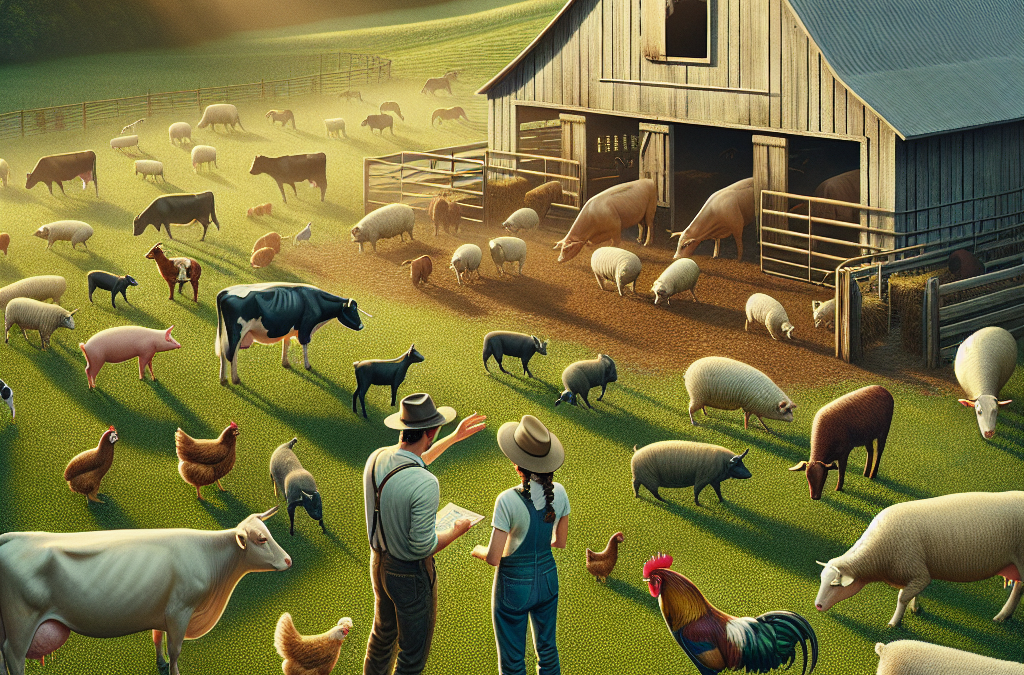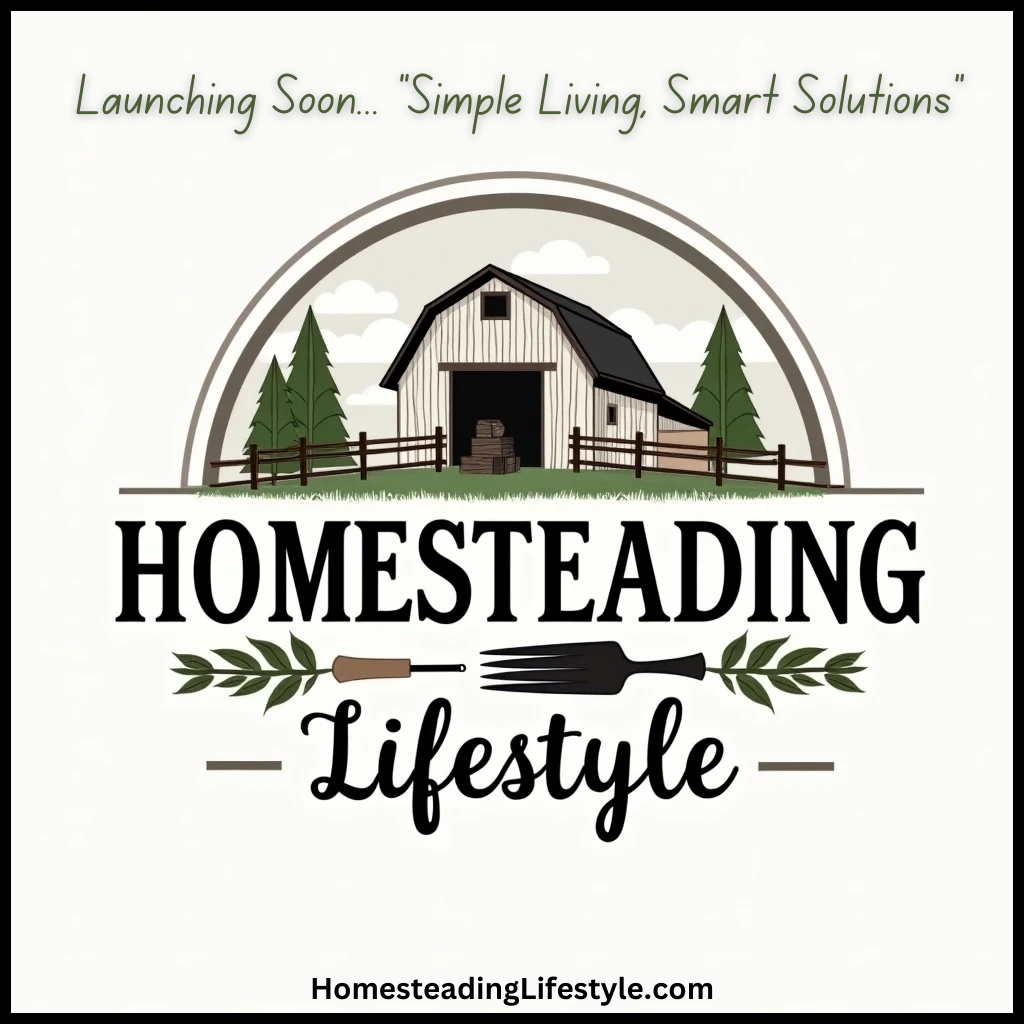Assess Your Homestead’s Space and Resources
Understanding Your Land
When I first started my homesteading journey, one of the biggest lessons I learned was the importance of understanding the land I had. Is it flat or hilly? Are there water sources nearby? These factors will significantly influence what type of livestock you can manage. For example, chickens thrive in smaller spaces whereas goats require more room to roam and graze.
Take some time to walk around your property, visualizing where different types of animals would fit. Consider the dimensions and how much space you can realistically dedicate to every animal. Not only does this affect their well-being, but it also affects your own ease of management.
Oversized livestock in limited spaces can lead to stress for both the animals and you. It’s crucial to map out potential enclosures or shelters and keep your livestock’s needs front and center.
Climate Considerations
Every animal has its own preference, comforts, and tolerances when it comes to weather. I’ve learned the hard way that not every breed is well-suited for every region. For instance, it wouldn’t make sense for me to raise sheep that are accustomed to warmer climates when I face harsh winters in my area.
Review the climate data for your region and cross-reference it with the livestock you’re considering. Some breeds are bred for heat, while others can endure colder temperatures. Ensuring that you pick animals that are happy and healthy in your climate makes for a stress-free homesteading experience.
Also, don’t forget about seasonal changes and how they might affect the animals you choose. Consider factors like available pasture, feed requirements, and whether you’ll need additional shelter during inclement weather.
Feed and Water Sources
Feeding my livestock is one of the most significant parts of keeping them healthy. Not only do I have to ensure there is enough food, but it must also be nutritious. Different livestock have varying dietary needs. Chickens, for instance, thrive on grains and can be great foragers, while cattle often require pasture rich in diverse plant life.
Let’s not forget about water. Each animal needs easy access to clean, fresh water daily. Ensure that you have a feasible plan for providing this. I learned that whether it’s using a trough or a simple bucket system, you’ll need to be consistent.
In addition to natural resources, consider the cost of feed and supplements throughout the year. It’s vital to factor these expenses into your overall budget for maintaining healthy livestock.
Determine Your Goals for Livestock
Meat Production vs. Dairy
When I first started thinking about livestock, I had to decide what I really wanted from them. Did I want animals for meat, milk, eggs, or perhaps a combination? Knowing this helps narrow down your options quickly. For instance, if meat production is your focus, consider raising pigs or beef cattle. But if you lean more towards dairy, then goats or cows would be a better fit.
I’ve found that having a clear goal helps with my overall management and care strategies. Each type of livestock requires unique handling and care, so knowing your end goal allows you to create tailored feeding, housing, and health care routines that help you achieve success.
Moreover, keep your family in mind too. You’ll want to choose livestock that everyone is comfortable handling and consuming, given that raising these animals can become a family affair!
Breeds and Their Characteristics
Once I decided on my goals, I quickly realized that not all livestock breeds are created equal. Each breed carries its own set of traits including temperament, size, and health challenges. For example, a Silkie chicken is very docile, making them great for kids, while a Bantam breed can be more flighty.
Take time to research and connect with other local homesteaders to see what breeds work best for them. I’ve benefited from numerous conversations where I could learn about the breeds’ requirements in my specific environment.
Additionally, consider the lifespan and breeding patterns of the animals. Some breeds may require more maintenance or monitoring throughout their lives. Make sure you’re ready for this commitment before jumping in.
Financial Investment and Maintenance Costs
Let’s be real: raising livestock comes with costs. I’ve learned that the initial purchase price isn’t where it ends. From feed, veterinary care, and housing to emergency expenses, I keep a close eye on my finances. You need a budget plan that accommodates all these needs.
To gain a clearer picture, break down the ongoing expenses into clearly defined categories. I found it helpful to create a spreadsheet that tracks costs monthly. This has been vital when assessing what livestock is sustainable for my homestead.
Remember, quality animal care isn’t just a financial investment but also requires time and energy. It’s a juggling act, and keeping a watchful eye on costs helps me manage my homesteading journey.
Plan for Care and Management
Daily Care Routines
Once I had my livestock settled in, creating a daily care routine was essential. I learned that creating schedules for feeding, checks, and clean-ups keeps you organized and ensures everyone’s health. I often set reminders to help me stay on track, especially during busy weeks.
Have a plan that matches your day-to-day life. Some animals may require more hands-on care than others. This is crucial because proper care leads to healthier livestock, which in turn benefits your homestead.
And don’t forget to involve the family! It’s more fun and efficient to share responsibilities. Kids can help with feeding smaller animals, while adults can handle larger livestock. Building this team effort fosters a sense of responsibility and learning for everyone.
Health and Veterinary Care
Now, let’s chat about health, because healthy livestock equal happy livestock! I’ve developed relationships with a good vet who specializes in farm animals. Regular health checks and vaccinations are critical, especially if you’re expanding your collection.
Learn the basic signs of illness for each type of livestock you’re caring for. A little observation can go a long way in catching health issues early. I maintain a health journal for my animals to track vaccinations, treatment, and any signs of illness.
You can’t shy away from unexpected costs when it comes to health emergencies. A prepared plan (like an emergency fund) helps keep that stress to a minimum.
Breeding and Future Planning
If your goals include breeding, the planning can get more complex. I once dove headfirst into breeding without fully understanding the genetic considerations. Now, I prioritize learning about lineage and breeding practices that ensure the health and vitality of my livestock.
Considering future space and resources for potential new arrivals is also key. Making sure I have accommodations for additional animals is crucial. A breeding program takes time, resources, and careful planning to be successful.
Lastly, educate yourself on the market for selling offspring or products. There’s potential to expand your homestead’s offerings, and I’ve found local farmer markets to be an excellent starting point for this venture.
FAQs
What should I consider first when choosing livestock?
Start by assessing your land and resources. Consider space, climate, and available feed and water sources to determine what animals will thrive in your conditions.
How do I know which breeds to choose?
Research breeds that fit your goals, whether it’s meat, milk, or eggs. Connect with local homesteaders and learn which breeds perform well in your area.
What are the costs associated with raising livestock?
Costs can vary based on feed, veterinary care, housing, and emergency expenses. It’s wise to create a budget to estimate ongoing and one-time costs before making a commitment.
How much time do I need to dedicate to caring for livestock?
Daily care routines are essential. Depending on the type and number of animals, you might spend a couple of hours a day managing their needs.
Is it possible to raise livestock on a small homestead?
Absolutely! You can raise smaller livestock like chickens, rabbits, or goats, which require less space and provide great returns with adequate care and management.





